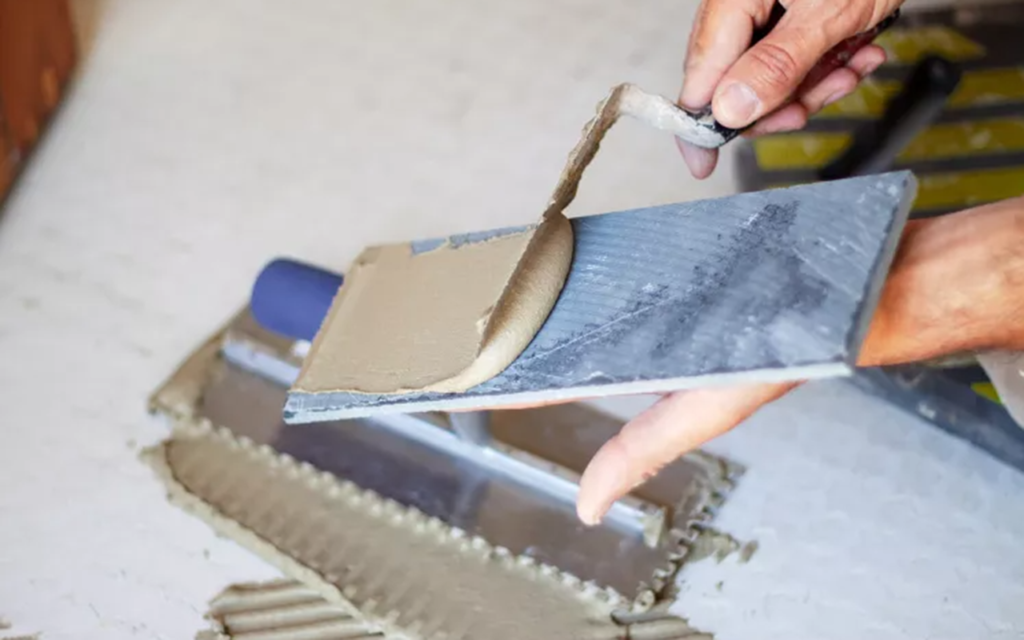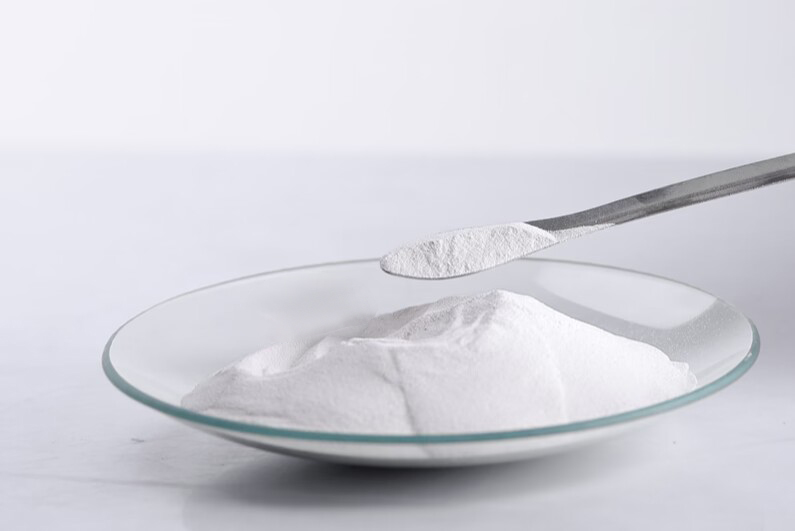A water-reducing agent is an admixture that can reduce the necessary unit water consumption in concrete, meet the specified consistency requirements, and improve the workability of concrete.
The main functions of water-reducing agents are as follows: increasing hydration efficiency, reducing unit water consumption, increasing strength, and saving cement consumption; improving the workability of unsolidified concrete and preventing the segregation of concrete components; improving impermeability. Reduce water permeability, avoid leakage of concrete building structures, and increase durability; increase chemical corrosion resistance; reduce the shrinkage rate of concrete solidification and prevent cracks in concrete components; improve frost resistance, which is beneficial to winter construction.
After hardening, the concrete’s porosity and pore size are essential for concrete quality and waterproof performance. The water-cement ratio of the concrete mixture plays a decisive role in the concrete porosity and pore size, compactness, and anti-seepage performance of the concrete structure. Since the permeability coefficient of concrete increases rapidly with the rise of the water-cement ratio, when it increases from 0.4 to 0.7, its permeability coefficient increases by more than 100 times, and the water-reducing agent has a solid dispersing effect on cement. It can significantly reduce the attraction between cement particles employing polar adsorption, effectively hinder and destroy the flocculation between particles, and release the water in the floc, thereby improving the workability of concrete, so it can significantly reduce the mixing water consumption, which means it can reduce the ratio, change the distribution of capillary pore structure of hardened concrete, considerably reduce the pore size and total porosity, and improve the compactness and impermeability of concrete. Water-reducing agents can also delay the peak of cement hydration heat, reducing or avoiding cracking due to temperature stress before large-volume concrete reaches a particular strength, thus improving the waterproofing effect of large-volume concrete.
Many types of water-reducing agents exist, and the classification methods are diverse. Some are classified according to plasticizing effect, some according to air entrainment volume, some according to their impact on setting time, and some according to raw materials and chemical composition.

According to the plasticizing effect, it can be divided into ordinary water-reducing agents and high-efficiency water-reducing agents. Water-reducing agents with rates≥ 5% and < 10% are called regular water-reducing agents; with a rate ≥ 10% are called high-efficiency water-reducing agents.
According to the impact on setting time and early strength, it can be divided into standard type, slow setting type, and early strength type. Extending the initial setting time of concrete mixed with the traditional water-reducing agent must be at least 1 hour, but at most 3.5 hours; the final setting time must be at most 3.5 hours. In addition to water-reducing and strengthening effects, early-strength water-reducing agents can also significantly improve the early-stage strength of concrete.
According to raw materials and chemical components, it can be divided into lignosulfonate water-reducing agents, polyalkyl aryl sulfonate water-reducing agents (commonly known as coal tar-based water-reducing agents), sulfonated melamine formaldehyde resin sulfonates water-reducing agent (commonly known as melamine water-reducing agent), molasses water-reducing agent, and humic acid water-reducing agent.
(1) Types of water-reducing agents
1. Polyalkyl aryl sulfonate water-reducing agent
Polyalkyl aryl sulfonate water-reducing agent is also called coal tar-based water-reducing agent. It uses a certain fraction or specific fractions of coal tar as raw material, generates a sulfonic acid derivative through a sulfonation reaction, condenses it with formaldehyde, and then neutralizes the condensate with an alkali or alkaline substance to remove or not A product made by removing excess sulfate.
According to the different fractions used in production, coal tar-based water-reducing agents can be divided into the following three categories:
(a) Naphthalene series water-reducing agent
It uses industrial naphthalene as raw material, and its main component is sodium polymethylnaphthalene sulfonate.
(b) Methylnaphthalene series water-reducing agent
It uses methylnaphthalene or detergent oil containing higher methylnaphthalene as raw material, and its main component is sodium polymethine naphthalene sulfonate;
(c) Anthracene-based water-reducing agent
It uses anthracene oil as raw material, and its main component is sodium polymethine-anthracene sulfonate. This type of water-reducing agent has early strength and a significant reinforcing effect; it can significantly improve the fluidity of concrete save cement; at the appropriate dosage, it has little impact on the setting time of concrete; it will not cause corrosion of steel bars and other properties.
The following matters should be paid attention to for this type of water-reducing agent when using it.

(a) The appropriate dosage of this type of water-reducing agent is generally 0.5% to 1.0% of the cement mass.
(b) The mixing method greatly influences the plasticizing effect of this type of water-reducing agent. Generally, water is added first and stirred for 2 to 3 minutes, and then the water-reducing agent is added to achieve the best effect.
(c) When porous aggregate is used in concrete, water must be added first, and the water-reducing admixture should be added last.
(d) Concrete with a significant slump should not be transported over long distances by dump trucks, and the water-reducing agent should be post-mixed.
(e) The gas content of this type of water-reducing agent varies greatly and should be carefully selected according to different purposes of use.
Lignosulfonate water-reducing agent
Lignosulfonate is obtained by processing pulp waste liquid. The lignosulfonate water-reducing agent is the earliest successfully researched and most widely used water-reducing agent. Its relative molecular mass is 1000-3000, a natural polymer compound.
Lignosulfonate water-reducing agents can be divided into calcium salts and sodium salts. Calcium lignosulfonate is commonly used in construction projects. Three main types are
- Pulp waste liquid or its dry powder. This product is of pulp waste liquid after extracting alcohol and yeast. The waste liquid concentrate contains 55% solids and 7% to 8% sugar. There is also dry powder obtained by extracting only alcohol and spray drying, with a sugar content of 10% to 8%. 12%, lignin 60%, ash 14%, pH 4-5.
- Simple desugared calcium lignosulfonate. This product is made by heating the alcohol waste liquid with milk of lime to 92℃~95℃ for about 0.5h~1h, then cooling it to about 40℃, neutralizing it with sulfuric acid, and filtering it out. The precipitated calcium sulfate is obtained by concentration and drying, yielding 96% and a sugar content of less than 4%.
- Refined calcium lignin. The preparation of this product is similar to the preparation of the above two products, except that it is concentrated to 50% and then spray-dried to obtain the product. The yield is 40%, and the sugar content is less than 3%.
The main performance characteristics of lignosulfonate alkaline aqueous agent are as follows:
(1) Save cement
Saving 10% of cement is feasible when the concrete strength and slump are close to the benchmark concrete.
(2) Improve the performance of concrete
When the cement dosage and slump are similar to the benchmark concrete, reducing water by about 10% will increase the strength of the concrete by about 15% from 3d to 28d, and the later strength will also increase.
(3) Improve the workability of concrete
The water retention, cohesion, and permeability of concrete are significantly improved after adding wood calcium.
(4) Has a specific air-entraining property
The air content of concrete increases by 2% to 3%, thereby improving the concrete’s resistance to mixing, freezing, and thawing when the calcium content of wood is 0.25%.
The main performance characteristics of lignosulfonate alkaline aqueous agent are as follows:
(1) Save cement
When the concrete strength and slump are kept close to the benchmark concrete, about 10% of cement can be saved.
(2) Improve the performance of concrete
When the cement dosage and slump are similar to the benchmark concrete, reducing water by about 10% will increase the strength of the concrete by about 15% from 3d to 28d, and the later strength will also increase.
(3) Improve the workability of concrete
The water retention, cohesion, and permeability of concrete are significantly improved after adding wood calcium.
(4) Has a particular air-entraining property
When the calcium content of wood is 0.25%, the air content of concrete increases by 2% to 3%, thereby improving the concrete’s resistance to mixing, freezing, and thawing.
(5) It has the effect of retarding the setting and reducing the initial heat of hydration of cement.



